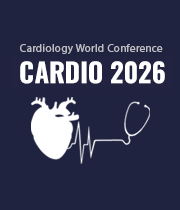Title : Recovery of left ventricle dysfunction after PCI in STEMI patients within 12 hours of onset
Abstract:
Abstract: The primary causes of premature death are cardiovascular diseases, Cardiovascular diseases also led to around 17.9 million (32.1%) deaths in 2015 (8). Left ventricle dysfunction is the most recurrent consequence of ST-elevated myocardial infarction and still, it is a powerful predictor of mortality. Percutaneous coronary intervention (PCI) of the culprit artery disease in acute coronary syndrome is related to a significant improvement of left ventricle segmental function (15).
Methodology: It is a retrospective case series study. All 102 individuals included with the diagnosis of ST-elevated myocardial infarction patients presented to the hospital within 12 hours and underwent PCI at the French medical institute of mother and children (FMIC) hospital. Data were collected from the medical record files of the patients and were analyzed. We took the patients who had Left ventricle dysfunction on echocardiography on the first presentation before PCI and saw the LV function after 3 months follow up.
Result: Overall we had 102 patients with the diagnosis of St-elevated myocardial infarction (STEMI) presented within 12 hours, we had 78.4% male and 21.6% female patients, 55.9% had hypertension, 21.6% were diabetic, 22.5% had Dyslipidemia and 19.6% were smokers, the mean age was 58.11 ± 11.993 years, overall there was significant left ventricle dysfunction improvement with PCI.
Conclusion: This study concluded that percutaneous coronary intervention (PCI) improved significantly in ST-elevated myocardial infarction (STEMI) patients in the afghan population. Among risk factors, hypertension was the most frequent risk factor, and I recommend that PCI is a choice option for STEMI patients within 12 hours.



